Argentina! The first thing that pops into my head when I hear the name of this country is the best meat in the world and Malbec wine. So for all the time that I have lived in Argentina, I was lucky enough to taste all the local cuisine. It is a mixture of local national recipes and dishes brought by Europeans during the conquest of South America.
It is also a tradition to take them in rainy or temporary weather, because some people see it as a way of thanking the Virgin Mary's rain for being good for agriculture. There are other popular beliefs that return to consuming fried cakes on rainy days for Argentine gauchos. They are made from flour, fine salt, pork or lard and milk. Finally, sauté in plenty of oil.
This article has been split 976 times. We have spent many hours collecting this information. If you liked it, please share it. Argentina has a rich gastronomic culture that combines the flavors of European cuisines with Creole and Indian cuisine. So during your holiday in Buenos Aires, get ready to sample some delicious food. In Buenos Aires, the influence of Italian and Spanish cuisine is particularly appreciated. So you can also try Argentinian pizzas, stews, milance, pasta or gnocchi.
The choice of dishes is simply huge, which made me very happy. In Argentina, you will never get bored because of the monotony of food. Argentines love to cook at home and only cook dishes from their own country. And the country is very large, I would say - huge. To taste everything, I drove Argentina from north to south and from east to west, because each region has its own products, nuances, traditions and methods of preparation. The list is sooo long, so get ready for an exciting tasty journey through Argentina.
Argentinean gastronomy is usually carnivorous. In fact, it is known worldwide for its high quality beef. Typical dishes vary a lot from one region to another, but there are some that are very popular across the country and those that we want to talk about today. Don't forget to accompany them with some good wine from the area!
The most typical Argentine food and a selection of the most carnivores. Argentine roast consists of beef and grilled sausages over charcoal barbecues, so that they are cooked slowly and soaked in a smoky flavor. The mouth-watering cuts of these grilled meats include cooking or vacuuming. Argentinean roast is usually served with khimichuri sauce.
Charcoal Meat Dishes (Asado)
Ooohhh yeah! Meat! One of the best in the world! Mmmmmm! The Argentines themselves have meat as their main food. Meat is eaten here every day, for lunch and dinner. The most popular meat is beef. By the way, I love beef the most. Argentina is among the largest meat-exporting countries in the world, but they still keep the best for themselves - without processing and freezing. I even got my favorite butcher shops, where I always bought fresh meat, they are called Carniceria. Here you can buy meat and organs of various animals, sausages and homemade sausages. I learned in this country the main rule of cooking meat - “bought and cooked”, well, or “killed and cooked” if you are a hunter. In no case should you freeze meat here, it is believed that it loses its taste. There are more traditional meat dishes in Argentina than any other.
From the Spanish heritage, this is one of the most typical Argentinean dishes that never goes missing at parties or family tables. Whether fried or baked, empanadas are prepared very differently in each region. Also, their fillings are very diverse. The more traditional ones usually include meat, corn, onions, or cheese.
It is also usually seasoned with khimichuri sauce. This is very typical of the Boca neighborhood in Buenos Aires, where they serve in numerous establishments. It is usually cooked with corn and zucchini and includes a variety of meats including bacon, mongongo, and chorizo. It is a very nutritious and typical dish during the winter that is simmering.
The visiting card of Argentina, like many South American countries, is ASADO,or PARRILLADA... Translated from Spanish means "fried meat". 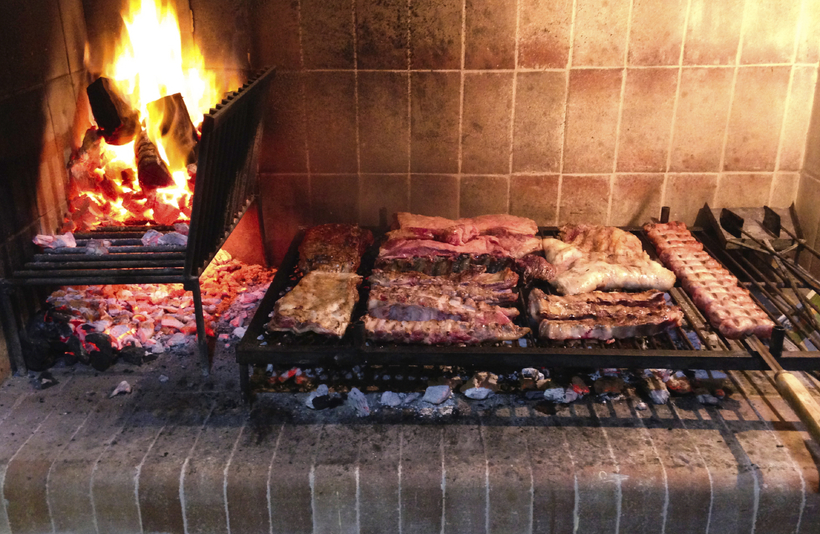
I've never liked kebabs, but I just adore the Argentinean grilled meat (on the grill). And all because they cook here whole parts of the carcass of an animal and sprinkle the meat with only salt. For example, if this is the back, then the whole piece is put on the grill, if the ribs, then all the ribs, if the back, then also a huge piece. Often the whole is fried. The process is quite lengthy, because in Argentina, it is not customary to turn meat until one side of the piece is ready. Coals are placed under the grate in small quantities, but often.
It is also commonly adopted on May 25, the day commemorating the first national government. It is made with milk, sugar and vanilla essence, which are cooked to a soft, thick, shiny and very sweet caramel. When it comes to gastronomy, summing up a few of the country's typical dishes is an ambitious task. No matter how big or small, each of its regions has local flavors that enrich their culture and expand elsewhere.
This is why Argentina is no exception. Because when we talk about flavors that are remembered in every bite, Argentinean cuisine is one of the finest you can taste. To prove it, we present these 5 dishes. Medium, three-quarters or cooked, for meat lovers, visiting Argentina is paradise. And besides that, in addition to its incredible landscapes, wines, football passion and tango, Argentina is one of the main meat producers in the world and has the most delicious meat products you can taste.
Asado is not only meat, all giblets and various sausages are fried on coals along with meat. The family is sacred for the Argentine, so every Sunday is Asado's family day. Everyone gathers: from parents and brothers to aunt and uncle with nephews. But I was invited to some families (close friends are also like family members). Well, not one asado is complete without red wine. You can also taste Asado in many restaurants in the country. And if you like certain parts of the carcass, then below I have given some names of dishes that can be ordered in a restaurant. All these dishes are also grilled.
Fried strips, loin, chinchulins, sausages, chorizo steak, sirloin steak and black puddings are some of the meats cooked in Argentine fries and are perfect for sharing with family and friends. Delicious flaky dough, crunchy and stuffed that surprises the first bite, just like Argentine empanadas.
The truth is, they also enjoy other fillings, and you can taste the flavors of potatoes, onions, fish, paprika, tomatoes, and even raisins. A simple dish, but with incomparable taste. One of Argentina's most traditional dishes is wood-flavored and consumed on major national holidays such as May 25th. Although it has undergone several changes over the years, the base ingredients of Lockro remain intact.
- Tira de asado - meat taken from the backbone of the carcass. The whole ribs are fried, but cut into small pieces before serving. I really like this dish.
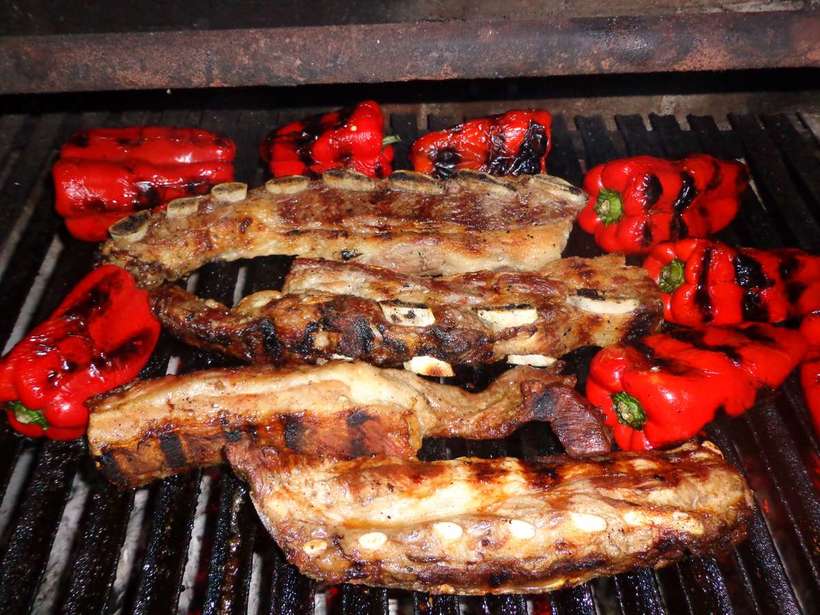
- Basio (el vacio) - this steak in South America cannot be found everywhere, so take the opportunity and try in Argentina. This is part of the side of the carcass (between the ribs and the thigh), usually a tenderloin with a layer of fat. Therefore, even with medium roasting, the meat turns out to be very juicy, but with a crispy crust.

- Bife de lomo is the classic and most popular steak in the country. For its preparation, use the fillet of the carcass. Since this steak is without a single gram of fat, it is not cheap in restaurants.
- Ojo de bife is another delicious and juicy steak. Very similar to ribeye.
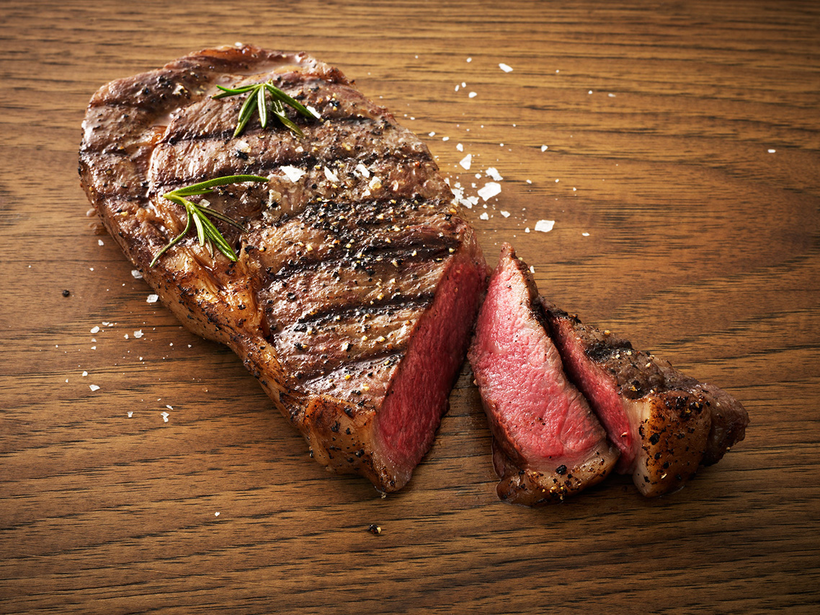
- Bife de Chorizo. My favorite steak and the most delicious because it has fat on the edges, which gives the meat an exceptional taste. The steak is classic for Argentina. In restaurants, the portion of meat is quite large. The steak is a tenderloin from the top of the thigh of the carcass. If you do not know where to start a meat tour in Argentina, feel free to order “beef de chorizo”.
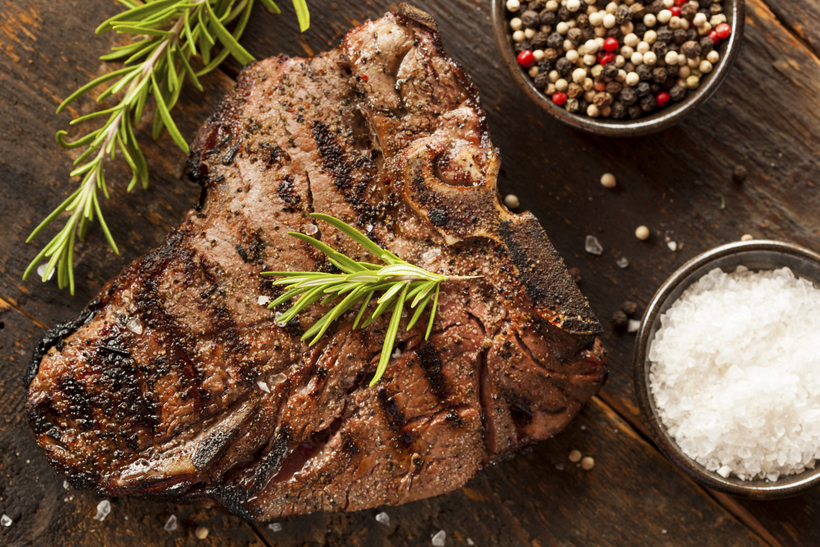
- Bife de costilla. Known to all as T-bone. T-shaped meat on the bone.

- Baby beef. This is a huge kilo piece of meat. This dish is designed for a company of several people.
- Colita de cuadril. Meat cut from the lower thigh. The steak is for those who love more food, because this piece of meat contains half of the fat. But due to this, the steak turns out to be very juicy. Although I'm not a big fan of fatty foods, this dish is sometimes present on my table.
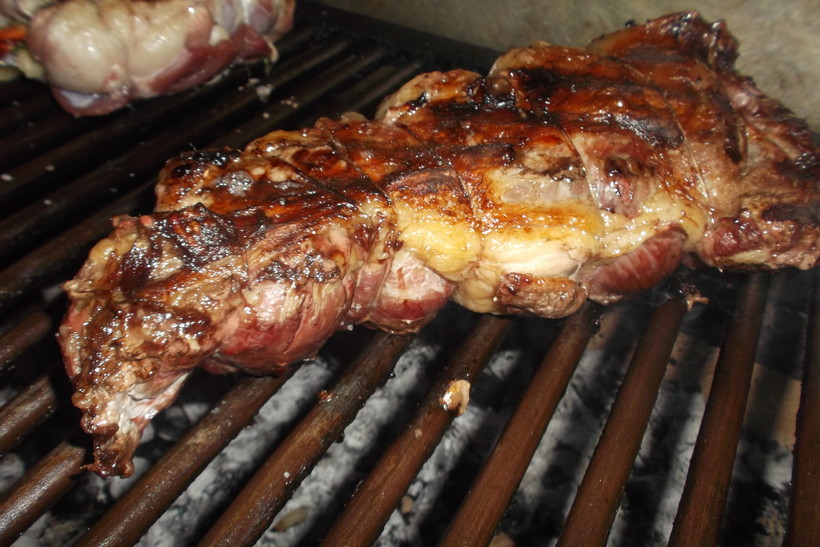
- Entrana ). The outermost part of the diaphragm. A piece of meat is tightened around the edges with fat and a membrane, so the water does not evaporate during frying, therefore the taste and meat are very juicy. This steak is inexpensive in any restaurant.

- Jugoso. This is a steak for lovers of meat with blood.
- Choriso (Chorizo) - spicy pork sausage. As in Uruguay and in, in Argentina they eat these sausages with bread and this sandwich is called Choripan.

- Morsigia (Morcilla). Blood sausage. There are 2 types of blood sausages in Argentina: criolla - a thick long sausage, and bombon - a small size that is eaten as a snack. Of course, like all sausages, in addition to blood, it contains pieces of bacon.
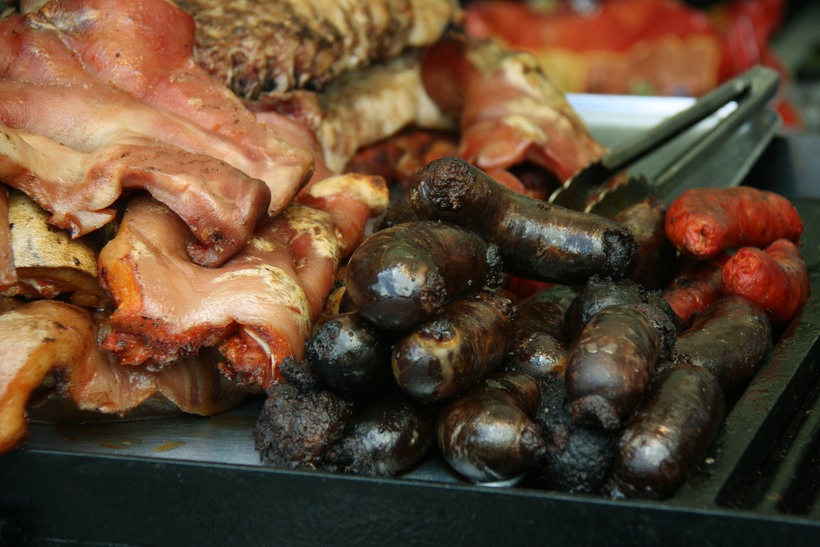
- Salchicha ). This is a long and thin pork sausage, in contrast to the plump Chorizo. They taste very similar, but Chorizo is much juicier.
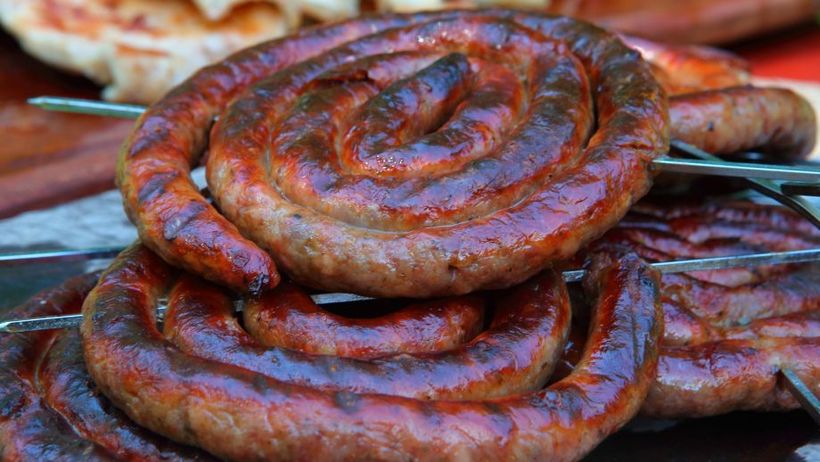
- Mozhejas (Mollejas). It is essentially a thymus gland that atrophies as the animal matures. Therefore, when ordering this dish, you can be sure that it will be a calf or a lamb. This is a very tender dairy meat.
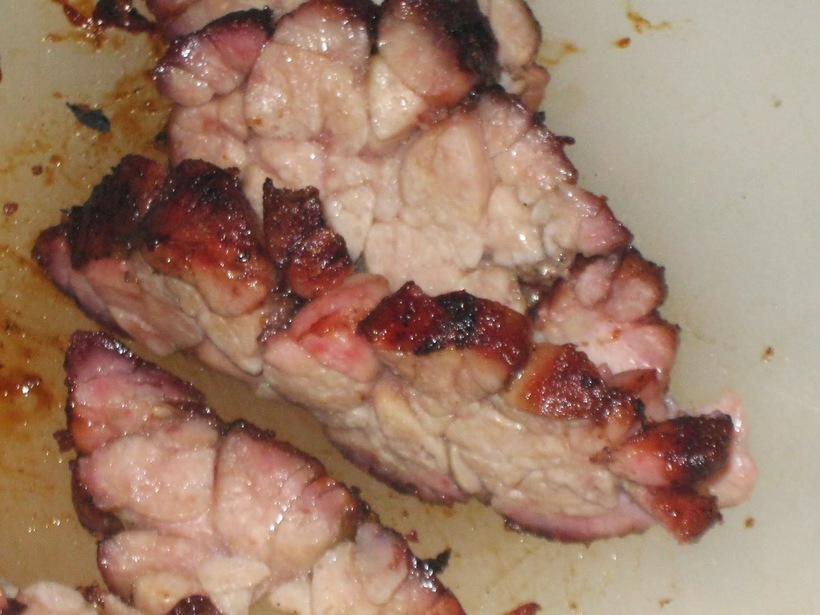
- Chinchulines ). This is the longest part of the small intestine. You will know it immediately when you see it. It's kind of a delicacy in Argentina, but I don't really like it, for example. But it's worth a try. Some people go straight to the gut). They are usually braided into a pigtail before frying.
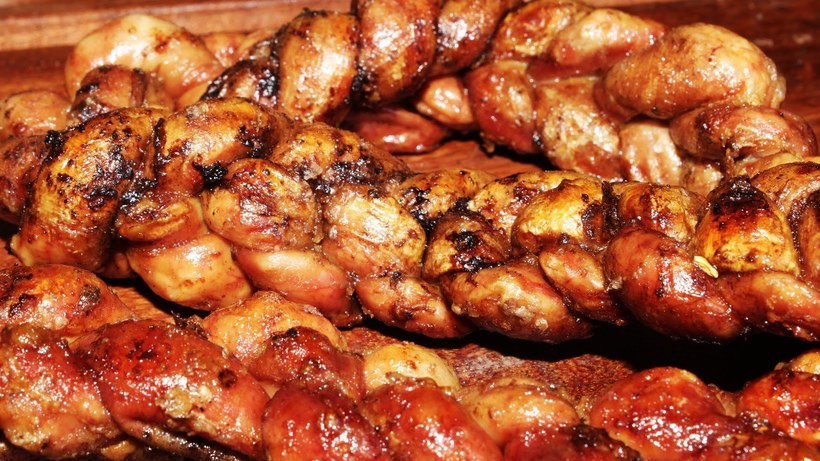
- Criadilla ). The most specific part of asado. Bovine eggs! Do you dare to try? I still haven't dared.
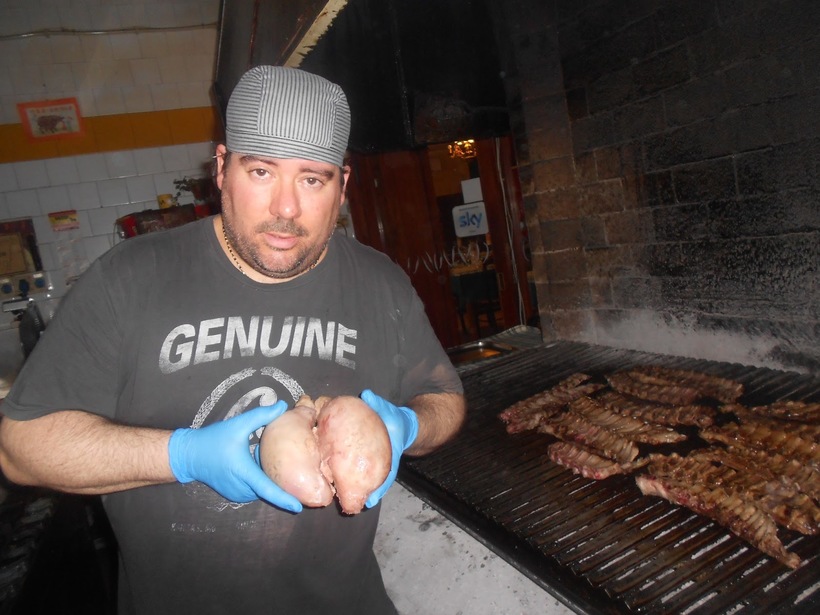
- There is a dish in Argentina that the gaucho is very fond of - the Argentinean cowboys. In fact, this is the same meat on charcoal, but this dish is called Carne asado. Distinctive feature asado gaucho is that only the meat and entrails of a young lamb are used, baked with spices.
- If you don't feel like messing around with large pieces of meat, then a quick way to still taste meat on charcoal is to cook Pinchos kebabs. They are very different from ours. The meat is cut into small pieces and mixed on a skewer with a variety of fresh vegetables. No sauces are used in cooking. By the way, Argentines love different meat and sausages on the same skewer. For example, chicken meat, beef and choriso, or pork and seafood.
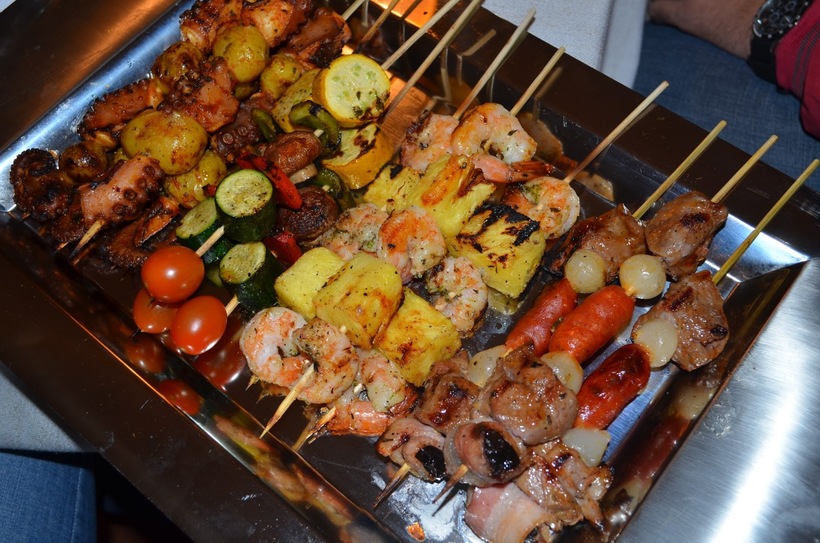
- Another type of kebab is Churrasco. Beef is used for Churasco. Before frying, the meat is rubbed with garlic and chili and soaked in orange juice. Then it is cut into cubes and fried over hot coals. I like this kebab more, because all the meat in a row is at least strange for me.
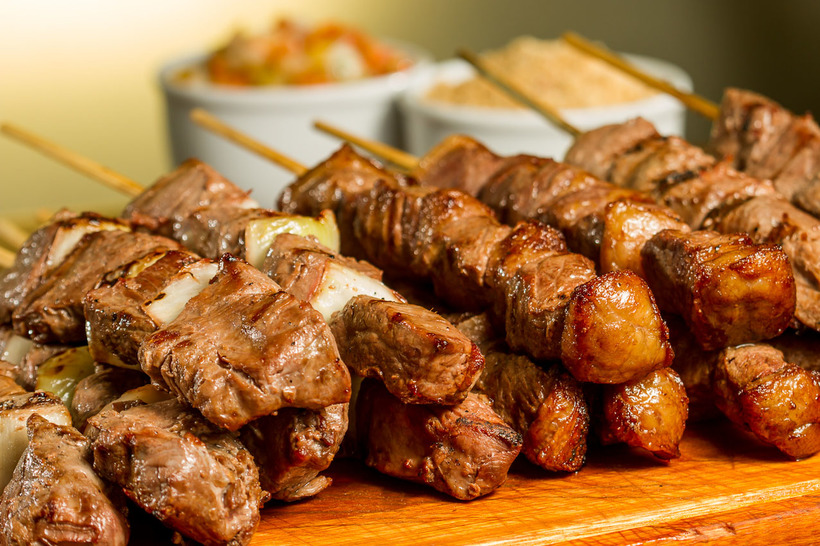
- And finally, the most delicious dish of all that is cooked on charcoal. I call it meat pizza, but in Argentina it is called Metambre. This is a whole work of art. For its preparation, a very thin and wide piece of meat is used, located between the skin and the ribs. Salt one side, pepper and put finely chopped garlic. Then the filling is laid out - this is at the discretion of the chef. But usually mozzarella cheese, carrots, peppers and boiled whole eggs are used. Next, the meat is rolled up, tied with threads and in this form is fried on coals for about an hour. You can also bake this dish in the oven without rolling the meat into a roll - this is the service called Metambre a la pizza. At home, Argentines boil a wrapped roll in water or milk - then the meat turns out to be very tender. But this kind of serving is quite difficult to find in restaurants.
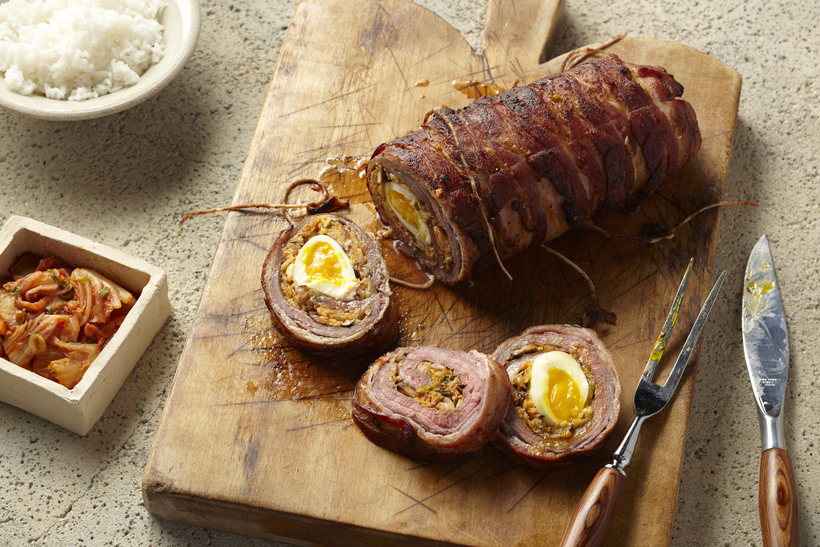
Other meat dishes
In addition to everyone's favorite charcoal meat, there are a lot of other dishes in Argentina. And it was here that I noticed most of the responses of European cuisines. Let's start with the first courses and in order to the pies.
He also adds corn, onions, bay leaves, cumin and salt to make this dish a blend of flavors and unique textures from meat and vegetables. There are many stories about the true origins of this dish, some say it comes from Italy, while others claim that it became popular in the 1940s in Buenos Aires. The truth is that it has become one of the most demanded by its own and tourists who do not lose the opportunity to do this.
Milanese cook with cuts of beef, then bathe in an egg with oregano, salt and pepper. Parmesan cheese is added, which is passed through breadcrumbs and then fried in plenty of oil until golden brown on both sides. Did you moisturize your mouth? Then plan your trip and take gastronomic tour around Argentina by discovering these and many more typical dishes!
- As in Uruguay, in Argentina Puchero is loved - it is a meat soup with vegetables. This dish is prepared from chicken or beef meat. They also use a lot of vegetables, who likes what, but potatoes, onions and corn are mandatory. Soup is served in pots and seasoned with spices before serving. Very satisfying! Such a stew was enough for me to dine.
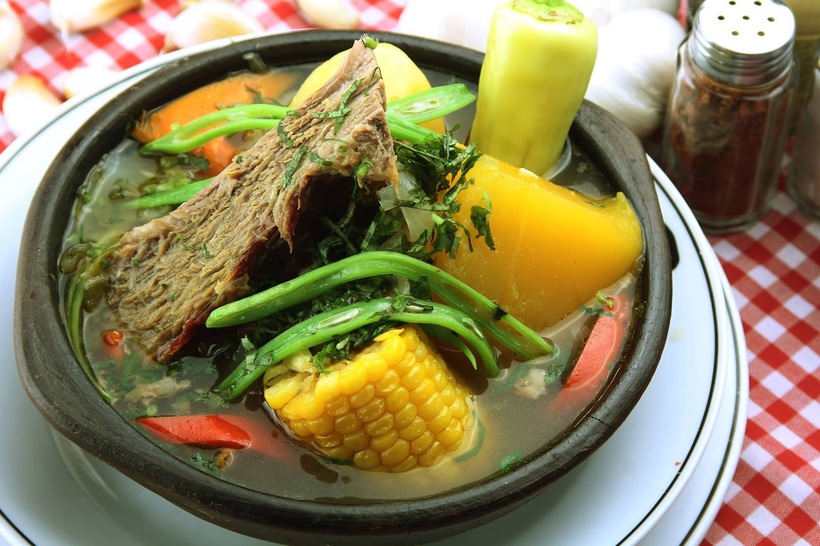
- Locro pork stew with corn is rare in cities, but in villages and suburbs, people cook this dish often. I noticed that in the south of the country in winter, when it's cold outside, this soup is especially loved.
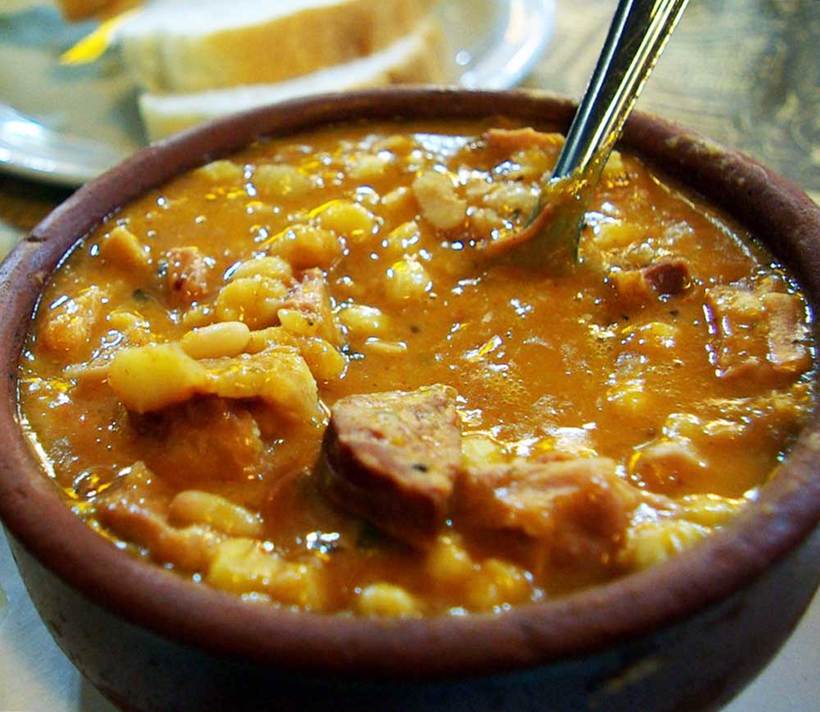
- Probably the most popular second dish in Argentina is Milanesa. A popular dish in almost all of South America. In Argentina, Milanesa de pollo is more popular - it is thinly sliced chicken meat in bread crumbs. Also very Argentines love Milanesa de lomo made from beef meat. Served in restaurants with fries and fried egg. I prefer oven-baked milanesa more, but here they prefer to fry.
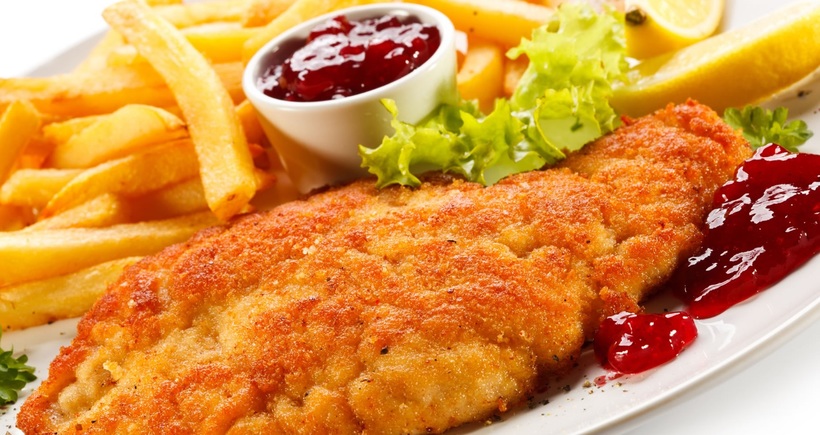
- Lomo a la pimienta / Lomo al chaminion (Lomo a la pimienta / Lomo al champignon). Fried meat in mushroom sauce, seasoned with black pepper.
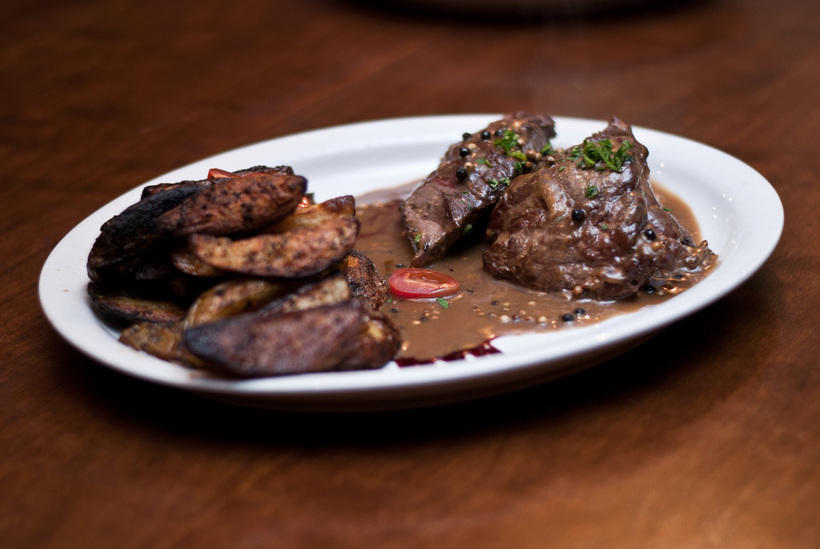
- Argentina has delicious chicken soaked in beer. They are steamed with mushrooms, paprika, almonds, herbs.
- When I miss Russia, I cook Pastel de carne in Argentina. This is very similar to our meat casserole, only the spices are slightly different here.
- Longaniza. Long dry dried pork sausage with anise flavor. In general, there are a lot of dried sausages in Argentina, but this one is typical for this country. This sausage is sometimes used in sandwiches.
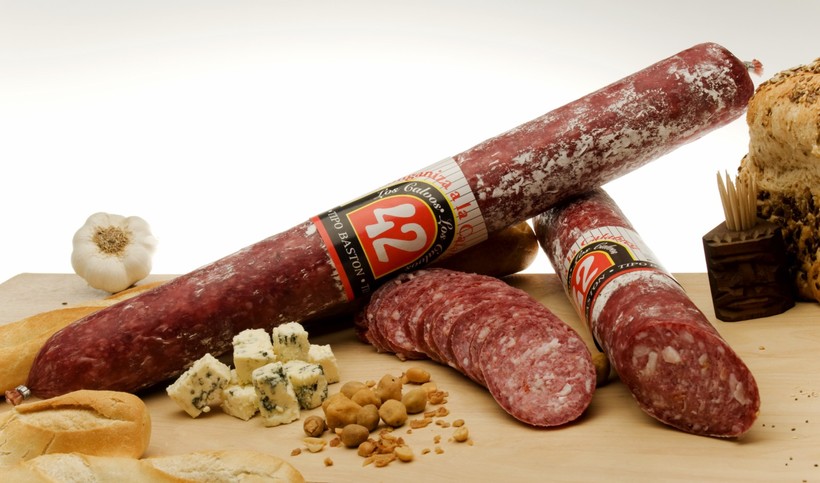
- Pancakes in Russia are eaten with all kinds of fillings, but in Argentina they are eaten only with meat. They are called Panqueques del horno.
- And, of course, Empanadas. Fried or baked pies with all kinds of fillings. But in Argentina, they are most popular with meat. The meat is fried with a lot of onions and spices, and a piece of boiled egg and an olive must be put inside. They are small in size and sold in batches of 12. You can buy them at every step.
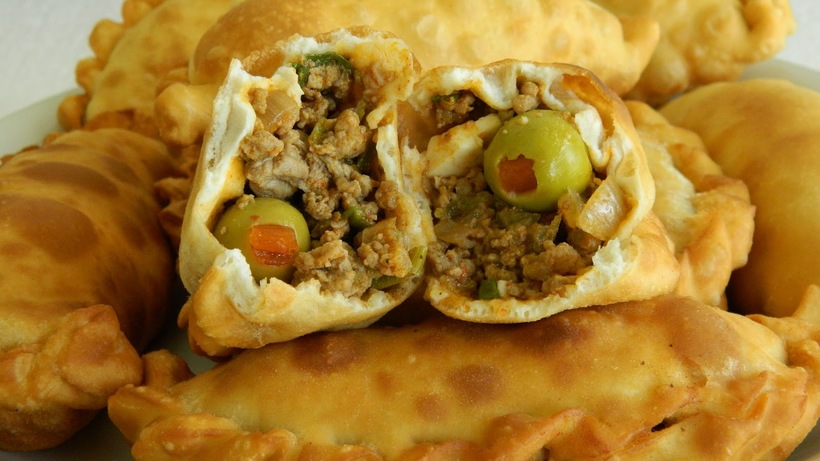
Exotic dishes of Argentina
In general, Argentina is considered the most European country in South America, both in terms of the structure of life and in cooking. But in some regions you can easily be surprised with unusual dishes. Basically, I tried such exotic cuisine in the north and south of the country. So, let's begin.
Talking about Argentinean gastronomy seems easy. Aside from oversimplification, we leave aside one of the main characteristics of the Argentinean table: the sheer number of influences we find in it. Argentinian grill chef. It is true that we Argentines are carnivores by nature. One of the reasons is the huge tracts of land where animals grow naturally for several generations. Argentinean gastronomic opportunities do not end with the grill or the pizza.
It is true that Italian forms and flavors are very present on the menu day in and day out. We cannot deny our Italian heritage and we feature a wide range of dishes from Sicily, Piedmont or Liguria. But we also find dishes of Jewish roots, Russians, Lebanese, Germans and multimates. Come today to give us a holiday Argentine cuisine without falling into the topic of roasting! There are many vegetarians in Argentina and we are fans of healthy cooking!
- Oxtails are held in high esteem by the Argentines. They are cooked in different ways - soaked in red wine and then grilled or, for example, fried with various vegetables and spices, finely chopped beforehand.
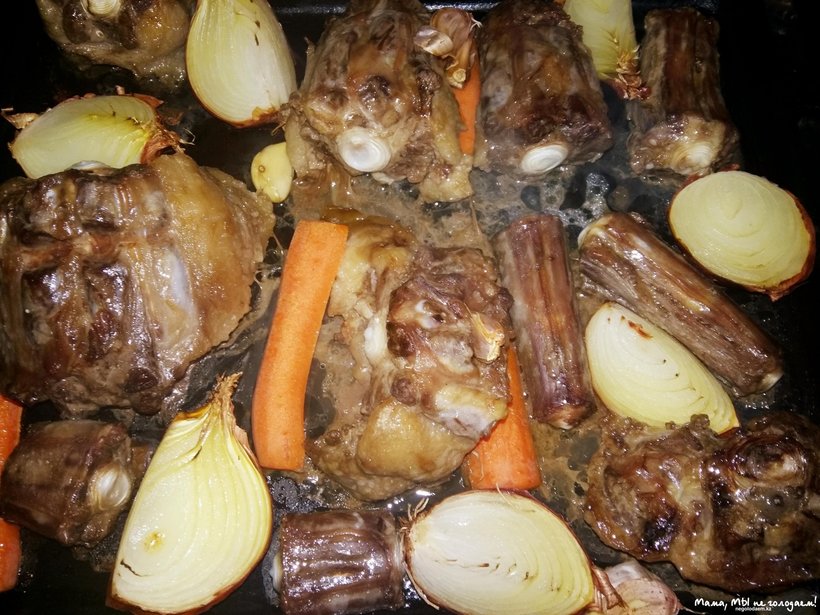
- In the south of the country, you can try Vizcacha meat - these are local rodents of the chinchilla family. Previously, meat was cooked under hot stones, and only salt and pepper were used from spices. But now the most popular and easiest way to cook is to fry with vegetables.
- Ostrich meat is also very popular in the south. Here you can taste the meat of the Emu and Nanda ostriches. They are bred on special farms. Ostrich meat tastes very different depending on which part of the carcass to try.
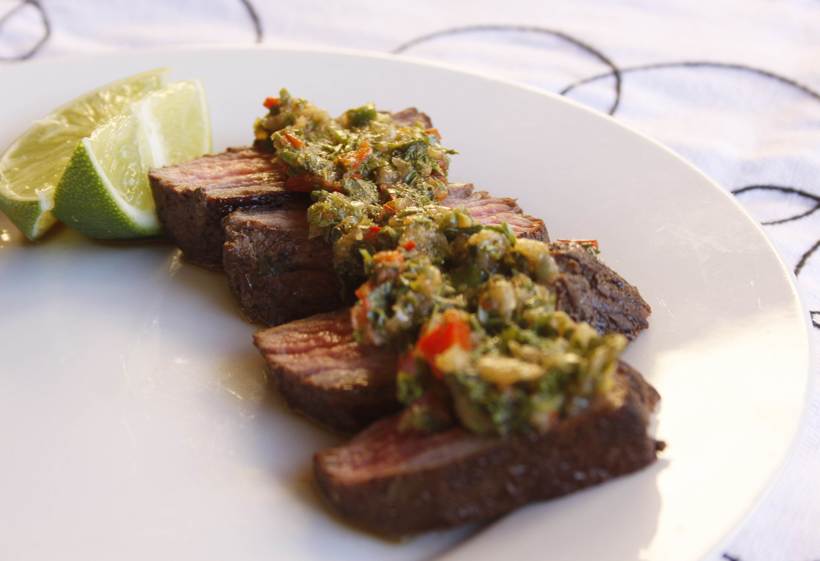
- Another interesting southern dish is the braised battleship. It is cooked with a lot of vegetables. Many also fry the armadillo. Very soft and tasty meat.
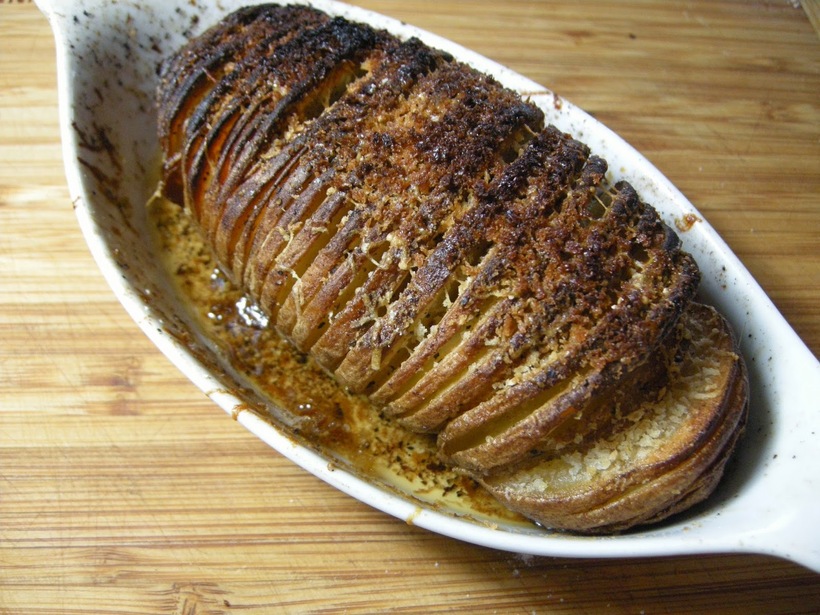
- Deer meat is eaten in Patagonia. You can also try in Russia, but if you didn't succeed, then in Argentina I tried all the methods of cooking venison: fried meat, and dried meat, and venison soup, and salted in oil. The meat is famous for the absence of any fat.
- But in the north with the same success they eat llama meat, or guanaco. There are as many ways of cooking as there are venison in Patagonia.
- I'll add a couple more local fruits to this list: Tuna and Membrillo. The first is a cactus fruit that grows only in the north of the country. Very sweet. You cannot touch it with your bare hands, so be careful when buying from the market. And the second looks like a pear. Locals rarely use it fresh, but adore marmalade made from it.
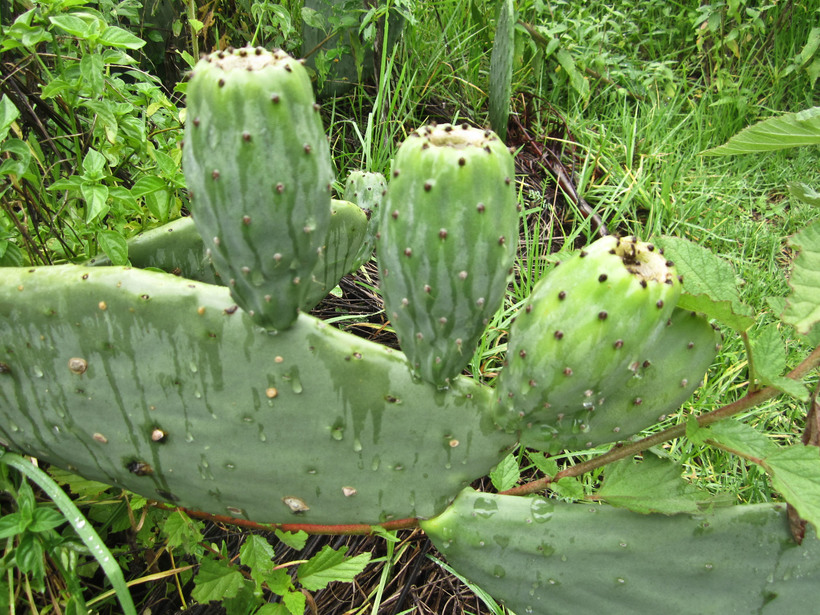
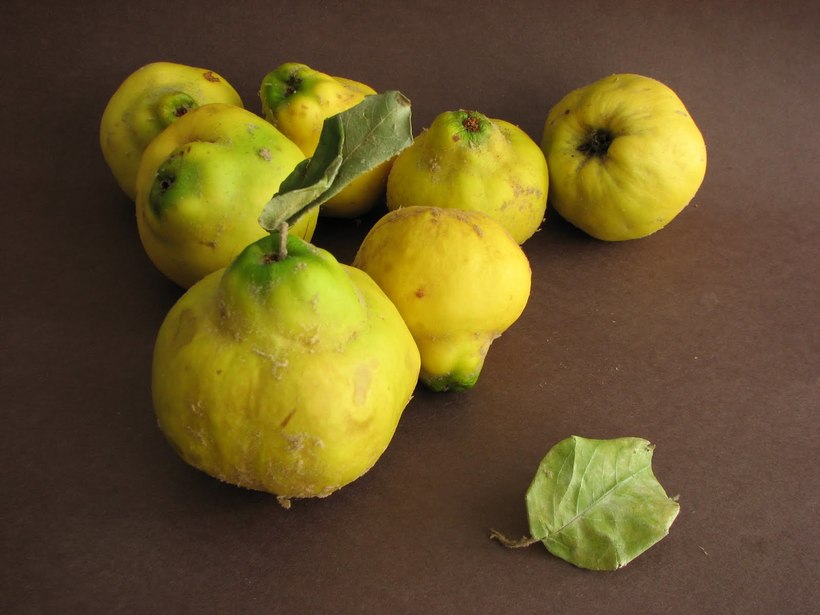
Vegetarian dishes
It is simply impossible to be a vegetarian in Argentina, but still there are vegetable dishes in this country. Most often they go as a side dish or simply complement lunch and dinner. I sometimes had a snack or ate something without meat instead of lunch, because dinner is the main meal that is not complete without meat. So, in order.
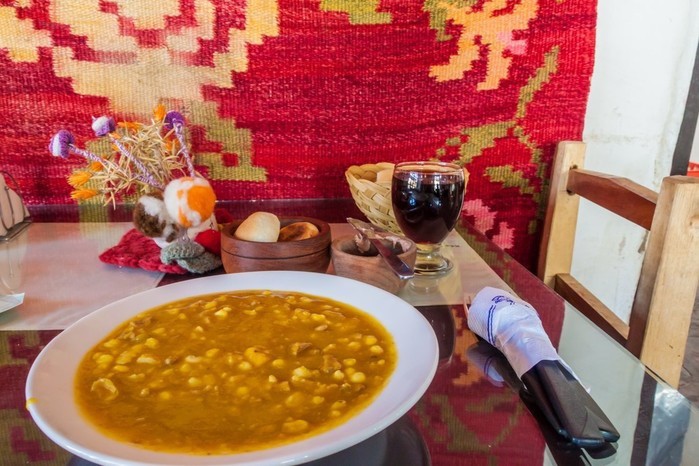
One of these "false" dishes that are unknown outside Argentina. Loko is a wise combination of cooking and patience to give you the best. Loko spreads its roots in the Andean culinary tradition. Its ingredients say it all: potatoes, corn, pumpkin. Beans and meat are added to this base. For the winter, spoon in hand, a popular and quintessentially Argentine experience.
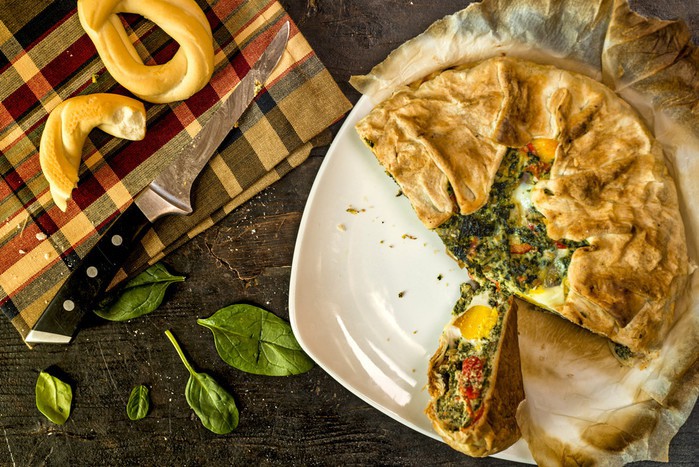
The first clarification: "pies" in Argentina are not sweet. The dough disk is filled with sautéed spinach with onions, garlic, pepper and salt. About this filling, and depending on the recipe you inherited, we can peel a couple of eggs or sprinkle with freshly boiled cheese. In any of its versions, try the dish. 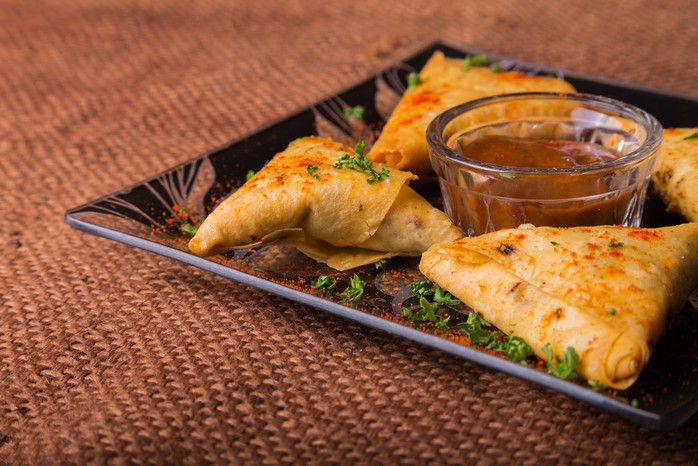
Something that surprises the first-time traveler in Argentina from a gastronomic point of view is to see the wide variety of influences in the writing of any restaurant. From tapas or typical Spanish dishes to Central European desserts or Arabic dishes, they are very common in Argentinean tables.
- The Italian Gazpacho soup is considered a traditional dish in Argentina. Typically eaten cold, it is a mixture of mashed tomatoes and cucumber, seasoned with olive oil and various spices. I love him very much since my visit to Italy and I am glad that here you can find soup in any restaurant.

- One of the family's traditional dishes is Noquis. In Europe, this type of potato paste is better known as Gnocchi. In Argentina, the 29th of every month is family nokis day! Pasta is prepared with various sauces like classic Italian pasta, but the most popular is tomato sauce with basil.

- A popular dish that is more commonly used as a side dish is called Salteado. This is a vegetable stew, which is ordered with potatoes, for example.
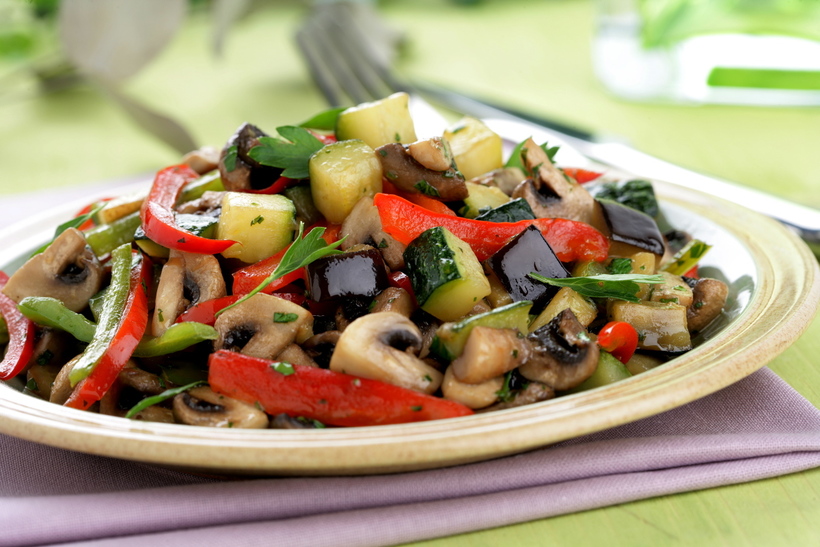
- Our Russian salad Olvier is also served as a side dish. It is called Insalata russa in Argentina. I am nostalgic for Russia when I order it here. True, the number of ingredients is less, there is more mayonnaise, and meat is never used. The easiest salad options are carrots, potatoes, and green peas.

- Pizza in Argentina occupies a separate place. They eat it here in large quantities. The fillings, of course, are very varied, but still the classic option is Pizza De Mozzarella y Faina. This is a Margarita pizza on Fine's corn tortilla.
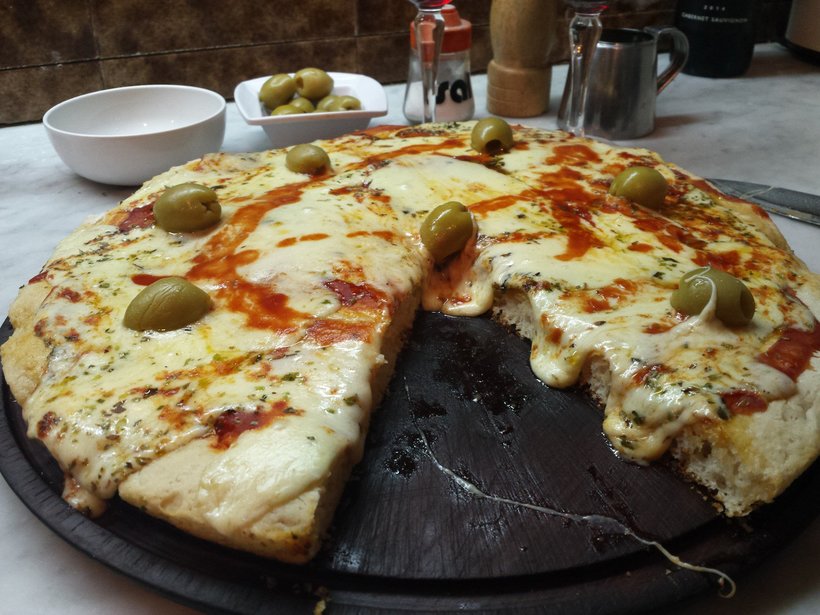
- In Argentina, omelets are also prepared, and not at all for breakfast, but rather for lunch. It is called Tortilla Española and the main ingredients are potatoes and onions.
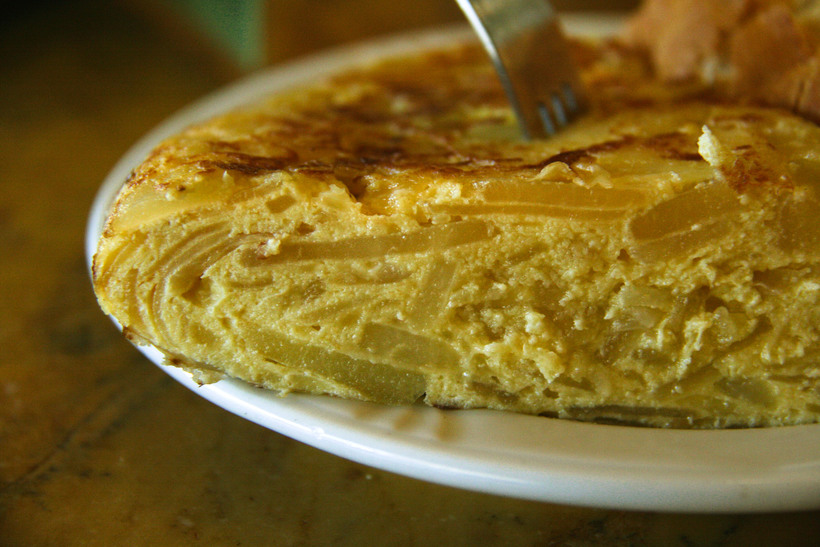
- In the northern provinces of the country and only there I ate Tamal. This dish remains from the Indians who lived here even before the arrival of the Spaniards. Tamal is a corn tortilla wrapped in corn leaves and steamed. The leaves are removed before use. Often contains a filling - vegetables with cheese.
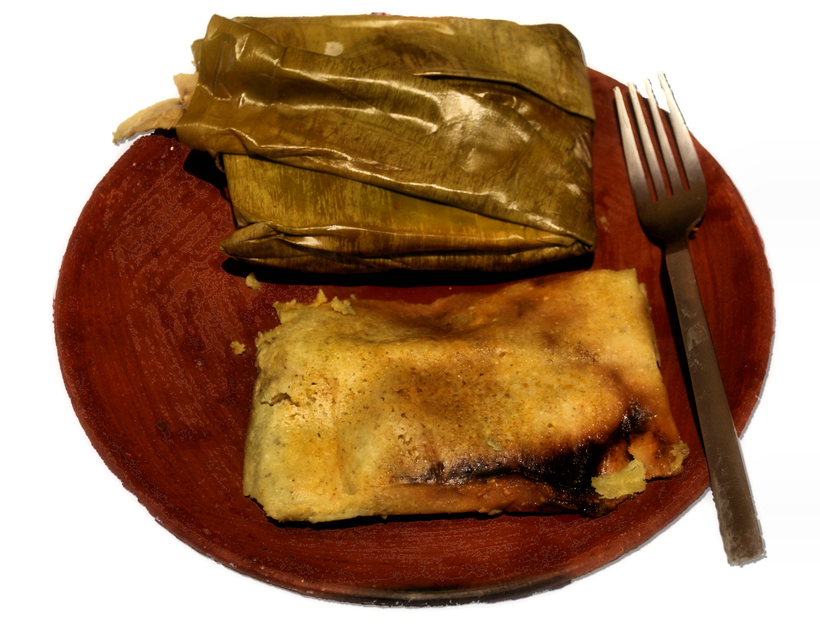
Fish dishes and seafood
Fresh fish in Argentina can only be tasted on the coast Atlantic Ocean and in Patagonia. Seafood is prepared deliciously and plentifully in the resort town of Mar del Plata, and Patagonia is famous for its trout. Fish is prepared in all possible ways - fried, boiled, pickled, stuffed, smoked and dried. Seafood, as elsewhere in the world on the coast, is famous for its variety of types and recipes.

Of course: tall and fluffy with its mass of bread and its thousands of fillings, or the final "to the stone". Always with a disproportionate portion of mozzarella cheese and a touch of oregano. The symmetrical portion of this thin mass of chickpea flour is the perfect companion for “one of the muzzas”. 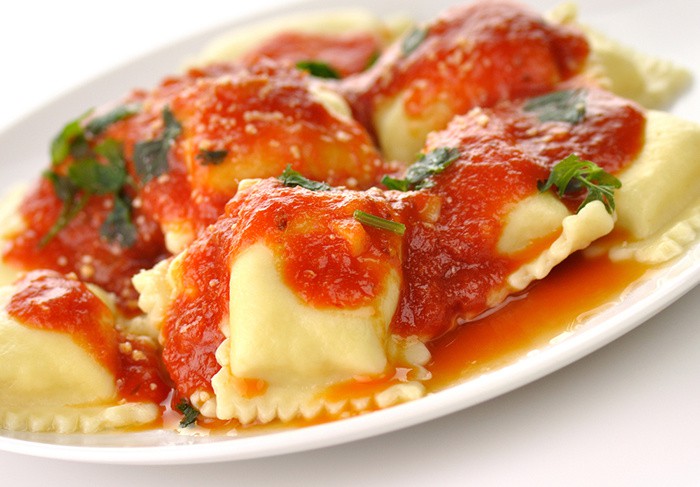
Yes, Argentines invented a pasta that even Italians did not know: Sorrentoni, which are not from Sorrento, but may have been born in the “fresh pasta shop” of any Argentine city. A typical egg mass of filled pasta is cut differently: circles about 4 centimeters in diameter.
- The most common fish in the country is Merluza. This is a white fish, not fat at all. You can try it everywhere and there are a lot of dishes. But perhaps one of the popular recipes is Merluza a la Provenzal. This is a fillet of hake, grilled and laid out on a pillow of stewed cherry tomatoes with olive oil and rosemary. This serve is one of my favorites. Simple and tasteful.

- Corvina (Corvina). White fish of the Atlantic coast. In my opinion, it is suitable for frying, and the Argentines have a pretty good traditional recipe for this. Filete de Corvina al ajillo - fried fillet of corvina, breaded with lots of garlic in coconut oil. Real jam!

- Another fish worth trying on the Argentine coast is Abadejo. As a rule, these are small fish that are worth trying as a soup with potatoes. The dish is called Abadejo guisado con patatas.

- Some of the most beloved fish in Argentina by men are Cornalitos. Firstly, it is a great beer snack, and secondly, it does not need to be peeled. This fish is only deep-fried.

- In Patagonia, I ate local wild trout almost every day - it is divinely delicious. It is called Trucha. I love grilled trout - trucha a la plancha. And this is not a piece of fish, most likely, they will bring you whole fried fish. Usually served with French fries or rice.
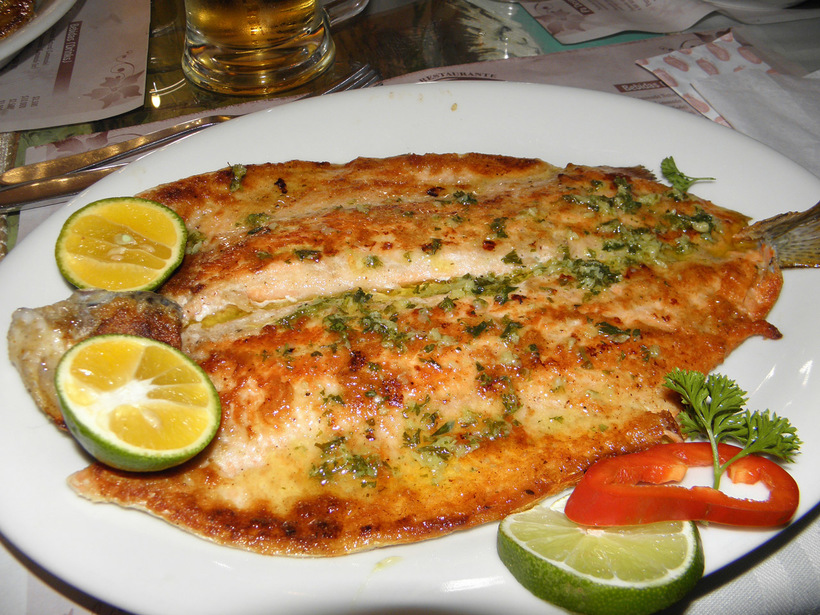
- Another fish dish of the Argentine coast is fish stuffed with seafood - Pescado relleno de mariscos. All in one, so to speak.
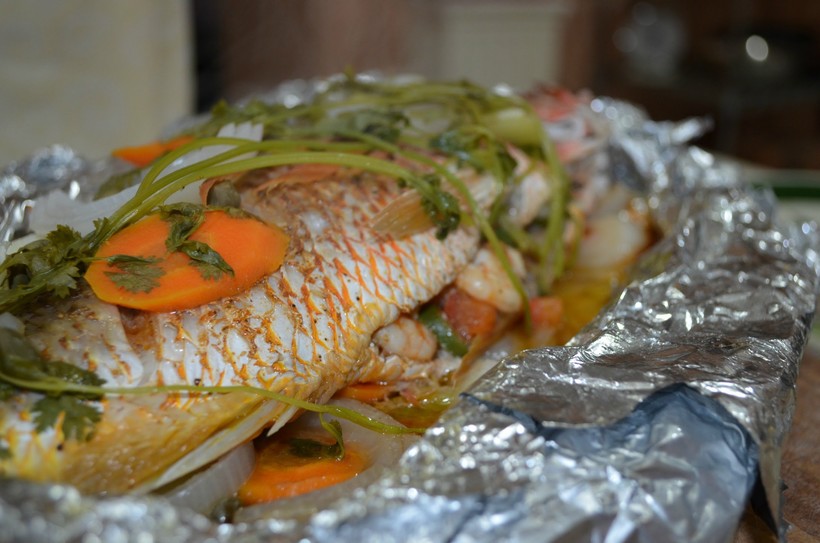
- Now my favorite seafood! We all know Paella, so here it is not considered a Spanish dish, with the most Argentinean one! And it is called the same - Paella.

- Be sure to try the seafood soup. Served in a saucepan for several servings. Cazuela de mariscos - perfect as a first course for lunch.
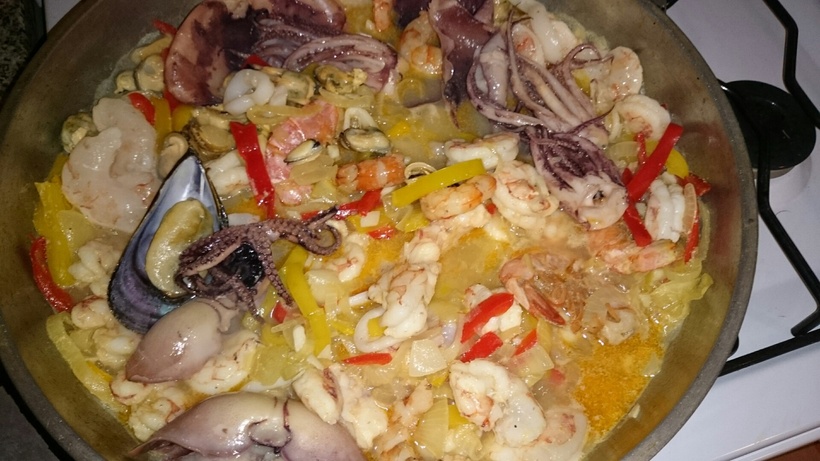
- The calamari rings fried in beer batter are called Rabas here - a very typical dish for this country.
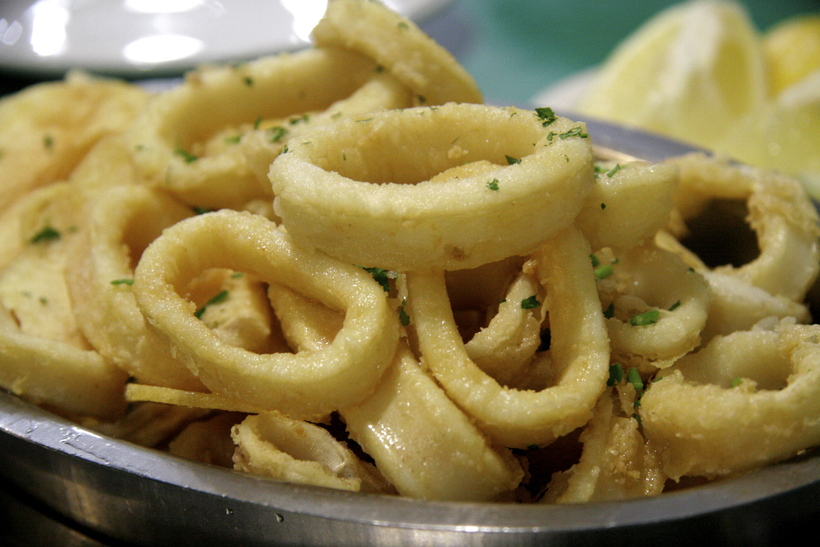
- in Argentina, they are very fond of octopuses, especially since they are caught here in large numbers. Delicious fried octopus slices with hot chili and potatoes - Pulpo a la gallega - a great choice!

- Shrimp lovers will definitely rejoice in Argentina. Because here they eat only large shrimps as an independent dish, and small ones are used for stuffing empanadas, fish, pies and for paella. Be sure to try Gambas al ajillo - large prawns fried in a lot of oil with garlic.
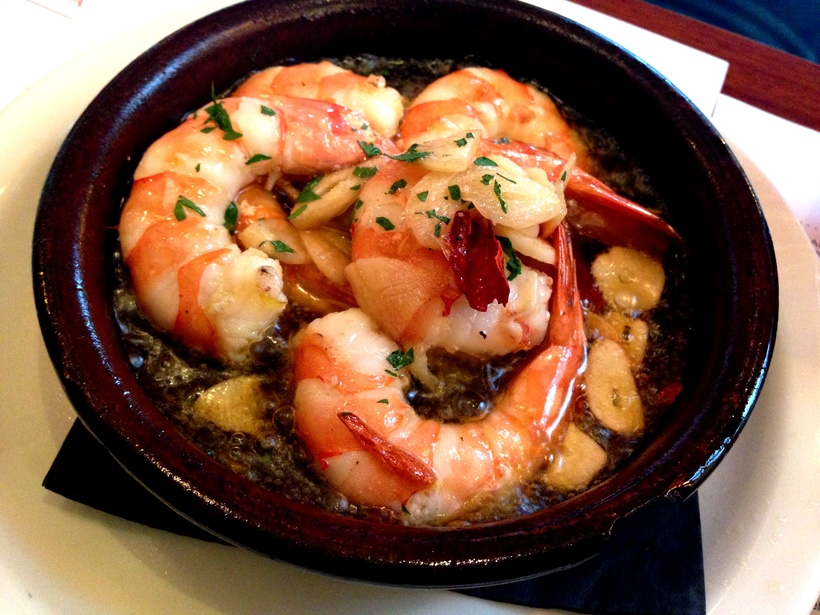
Also in Argentina you can try oysters, mussels and smoked eel. I would advise you not to dwell on the typical dishes, but to try everything that the eye falls on. Because the assortment is very diverse.
Its most common fillings include spinach and mozzarella, but there are highly creative versions with nuts, pear, bacon, plums, caramelized onions and other ingredients that dictate the chef's imagination. There are many options for starters, main courses and typical Argentinean desserts. We allow you to discover them on your next trip to Argentina. How to do it?
Chorizo steak: our favorite Argentine dish and our demise
Related content. Subsequently, we will tell you about the dishes that you cannot stop, and this will make you come back. Beef, or beef, is the crown jewel of Argentinean gastronomy. Does Argentina have the best meat in the world? We don't know, but of course the best and juiciest ones we ate.
desserts
There are a lot of sweets in Argentina. Well, how else, because a separate meal is reserved for them - onse (once) - at 7 o'clock in the evening. You cannot tell about all of them, but I will write about those that should not be missed by those with a sweet tooth.
- As in all of South America, boiled milk caramel is considered the main treat - Dulce du leche, in our opinion, boiled condensed milk. It is added to many cakes and pastries, and is also eaten with spoons.
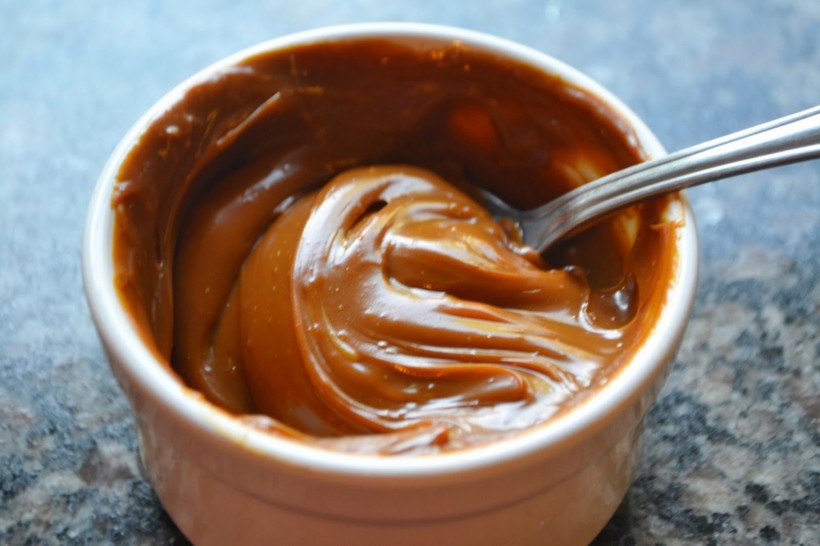
- Alfajores are perhaps the most common Dulce du leche biscuits in the entire country. The classic version is 2 shortcrust pastry cookies with a layer of caramel, sprinkled with coconut.

- Ice cream in Argentina is in no way inferior to Italian. Here it is especially held in high esteem. Considered one of the best in the world! It is sold in numerous Heladerias shops and is called Helado.
- Believe it or not, my favorite dessert in Argentina is a sandwich made from homemade cheese and sweet potato or membrane marmalade. Yes, yes, such a salty-sweet mix! Queso con dulce is worth trying, if only for the sake of experiment.

- One of my Saaam favorite desserts is Arroz con leche (rice with milk), because far from my homeland it reminds me of rice porridge! In fact, this is it.
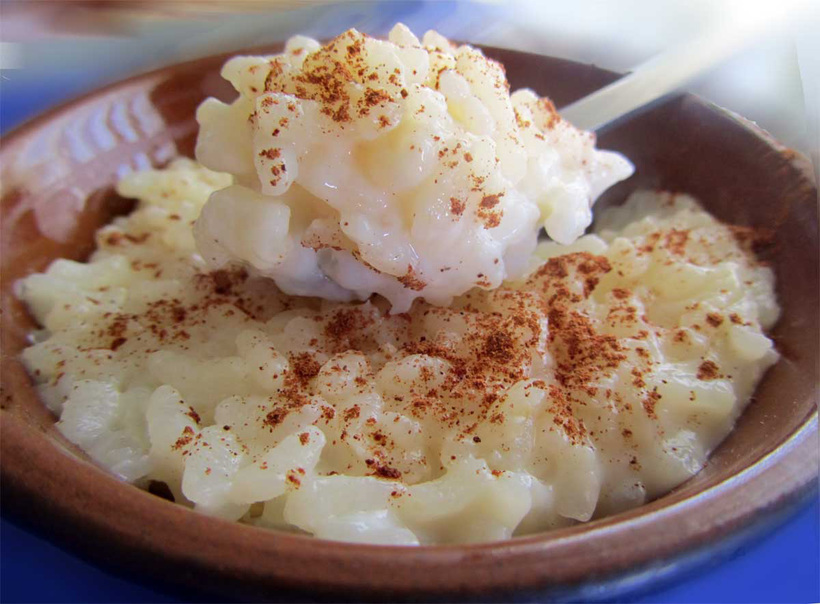
- The most typical dessert you can try in any restaurant is Flan con dulce de leche (Caramel Pudding).
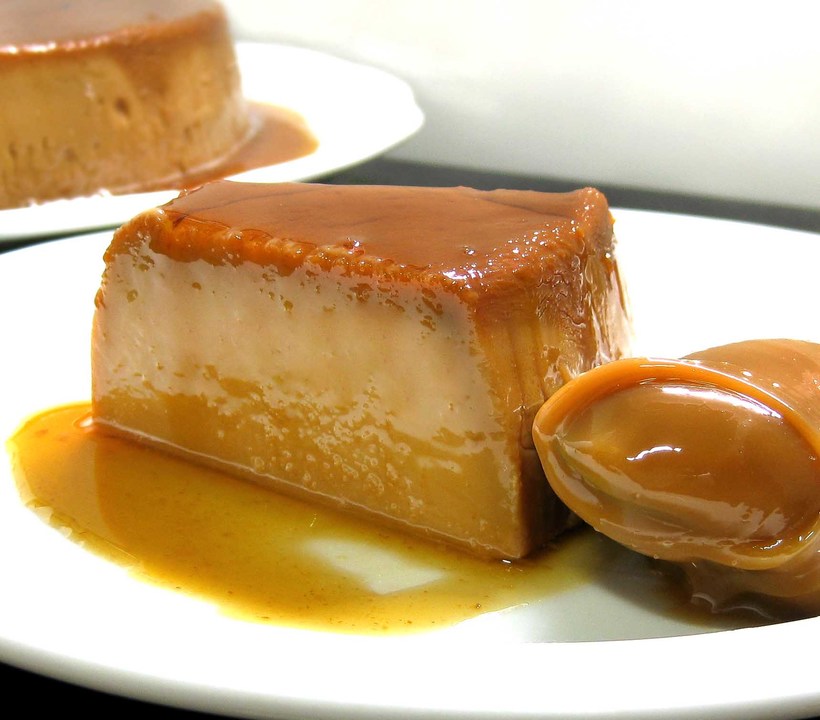
- Another dessert with Dulce de leche is caramel pancakes. Everyone loves them very much! Sometimes served hot with a scoop of ice cream.

- There are a lot of baked goods in Argentina. All kinds of puff pastries and buns, croissants, cookies with different fillings or just sugar. But the most favorite among locals are puff buns with membrane marmalade - Pasteles de membrillo.
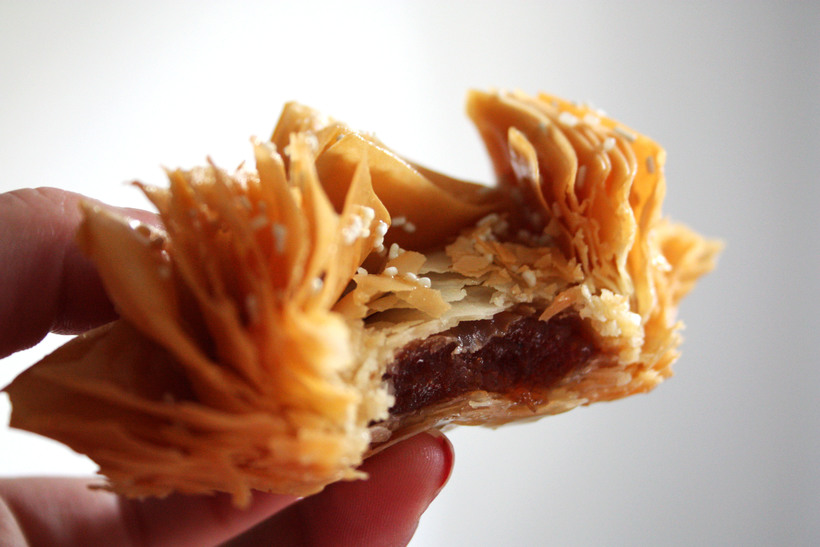
- Another dessert with marmalade is Pasta Flora - an open pie stuffed with the same membrane marmalade, although any fruit is now used.

- Masamorra is one of the most ancient recipes in Argentina. A rustic dessert based on maize, water, sugar and vanilla. Sometimes milk is used in cooking. I highly recommend it because you can't try it anywhere else.

Soft drinks
There are not as many of them as we would like, and all this can be tried not only in Argentina, but still!
Argentine cuts are different from Spanish cuts - in this post, if you're curious, you can learn all of them, and our favorite chorizo steak. We cannot say these three words together without taking us to Argentina and starting to salivate! Warning: In Argentina, it is customary to cook much more meat than in Spain. For many Argentines, Spaniards don't know how to cook meat because they leave it raw, and for many Spaniards, Argentines don't know how to cook meat because they leave it too cooked.
Argentine roast: more than a dish, a social event
If you so want, you have to ask for it in red english. Roast is something like a barbecue, barbecue, grilled or in the so-called "grill", and has nothing to do with grilled meat or a pot in Spain. This is a "meeting", excellent food in Argentina: from time to time, family and friends meet before a good roast. A social event as well as a gastronomic one.
- The most popular drink is mate. This is a kind of tea, the birthplace of which is Paraguay. To prepare mate, yerba (yerba) is poured into a special container, here called kolabasa, as the dry mass of crushed leaves of a bush is called. Then fill it in hot water, not boiling water in any way, insert a tube of bombilyu and start drinking tea.

- The second most popular drink is coffee exported from Colombia and Brazil. Most of all coffee is popular in the capital of Argentina - Buenos Aires. As coffee is one of the best in the world, locals prefer to drink strong espresso coffee.
- Well, in the north of the country, you can try coca leaf tea. This plant is also used to make cocaine. But tea is not a drug. Locals use coca leaves to carry altitude sickness because the Andes are the highest in the north. For ordinary people, this drink acts as a tonic.

Alcoholic drinks
In Argentina, of course, you can find any alcohol and in any quantity, but you yourself locals don't like variety very much. They drink a lot of beer, wine and fernet here.
- If we talk about beer, then, of course, first of all, about the Quilmes brand. This brewing company was founded by a German immigrant back in 1888. This is the most popular beer in Argentina. The brewery produces more than 15 types of beer, and all of them are unique. Their varieties can be tasted only in this country. also in large cities you will always find pubs with their own small breweries.

- Fernet is a strong herbal liqueur popular among the inhabitants of Argentina. In general, the birthplace of this bitter is. In its pure form, few people drink fernet, because it tastes very bitter. But here the Argentines got out of the situation and mix bitter with sweet Coca-Cola. Now there is a mint-flavored Fernet that interferes with the sprite. This drink has become a favorite in Argentina.
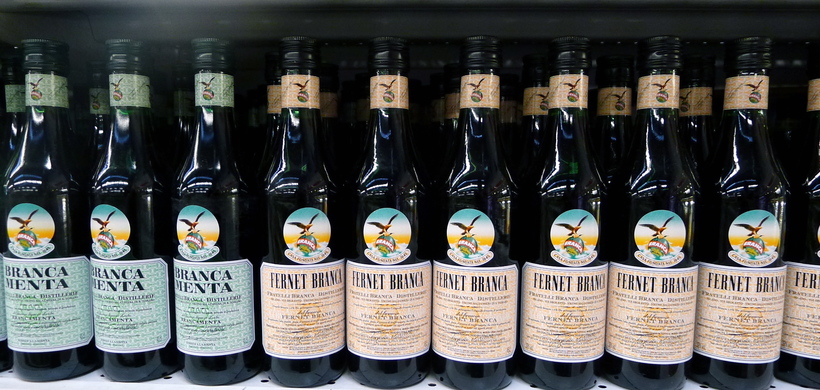
- Coca-cola in Argentina as a drug. They drink it a lot and mix with all imaginable and inconceivable drinks. Here is one of them - this is red wine with Coca-Cola. This cocktail is called here Calimocho. Mix 50/50 ingredients and add a lot of ice. Since in Argentina there is a ban on drinking alcohol in public places, locals simply pour wine into a bottle of cola and calmly walk along the streets.
You can't talk about wine so compactly, because Argentina is now in 5th place in wine production. Therefore, more details about wine.
Wine
Ooooh, this Malbec! The best in the world! Argentina is one of the largest exporters wine in the world. The most popular grape variety in the country is the black Malbec grape. Wineries in Argentina appeared 400 years ago, but with the arrival of immigrants from Europe, things went uphill. The most famous wine provinces are Mendoza, San Juan and Chubut. A distinctive feature of Argentine wines is that the vineyards are located at altitudes up to 2500 meters above sea level.

I have visited several wineries for tastings. Almost all of them are open to visitors. Many have restaurants with mountain and vineyard views. It is simply unforgettable to spend a day in the mountains while drinking wine.
Wineries in Argentina are equipped with the latest technology. They are a bit like a laboratory. The grapes are monitored at all stages of production. Formerly Argentina produced wines only for their own consumption and they were all inexpensive. But now everything has changed - Argentine wines are known all over the world. A lot of European countries are investing in the development of wineries, because the potential of Europe is almost exhausted.
In Argentina, red wine is the most popular. Argentines themselves adore their Malbec, this wine is rightfully ranked first in the world in terms of taste, overtaking France and Spain. Do not miss the opportunity to taste this wine here, especially in comparison with prices in Europe, here it will cost you quite cheap. If Malbec doesn't suit your taste, then you will always find varieties such as Caberne, Pino-Nuar, Tempranillo and Merlot.
The king of white grapes is Torrontes. It is very good to sit with a glass of white wine in the summer. Very good young and mature wines are obtained from these grapes.
It is believed that there are no bad wines in Argentina. Quality is monitored everywhere and very carefully. Therefore, feel free to take any bottle, regardless of the price. But still I will recommend my favorite names. I would recommend red wines from the wineries Trapiche, Bodega Pattriti, Familia Zuccardi and Salentein. The whites are El Esteco, Bodega Domingo Molina and Cafayate.
Argentine cuisine as a visiting card of the country
Well, our delicious journey has come to an end. Of course it is not full list of all dishes. But Argentina honors its traditions very much and preserves its recipes, passing them on from generation to generation. I adore this country for such a powerful palette of flavors. Despite the influence of European cuisine, the Argentines still retained their zest, and only introduced innovations to their national dishes to add color to their taste. Bon appetit in Argentina. And do not forget that Argentines have dinner quite late, around 10 pm.
Was strongly influenced by European cuisine. As a result, traces of the Indian, Creole, African, Italian and Spanish peoples can be seen in the country's traditional dishes.
Each region of Argentina has its own culinary specialties. They can be roughly divided into 4 parts:
- Northwest(province of La Rioja,). This part of the country was least of all influenced by Europeans, so traditional Argentine dishes have been preserved here. Among vegetables, the natives prefer chayote, avocado, tomatoes, quinoa, beans, amaranth, etc. The most popular are locros, empanadas and corn pie.
- Northeastern(provinces, parts,). The influence of the Guarani Indian tribe prevails here. The main products are freshwater fish, rice, cassava. In this area, Paraguayan soup, revire broth, mbehu from yukia juice based on cassava, chipu, cheeses and other Argentinian dishes are prepared. As for drinks, the natives prefer fruit juices, honey, heartwood of palm trees, coconuts, as well as juice from the bleach cactus.
- Central(provinces, parts of La Pampa, Entre Rios, Santa Fe). This area was most influenced by the Spaniards and Italians. Local recipes are dominated by meat, from which churrasco, escalope, beef stroganoff, chops, etc. are prepared. Pizza and pasta are especially popular among the population.
- South (Tierra del Fuego,). In this area they like to cook dishes from venison, lamb, goat meat, pork, poultry (emu and rhea ostriches) and seafood: casuel, pates, etc.
Features of Argentinean cuisine
The influence of the peoples of the world on the national dishes of Argentina has brought many new things to its culinary traditions:
- the Spaniards taught the natives to cook such dishes as jamon, croquettes, mondongo, meatballs, tortilla; from desserts - torrihy, alfahora, ansaimaza and the famous boiled condensed milk;
- the French "presented" Argentina with recipes for cold appetizers and omelettes;
- from the English, the natives adopted a love for escones breads and patches, as well as for tea;
- Milcao and quarantines were brought here from Chile;
- the Germans taught the natives to cook sweets: donuts, rolls and croissants.
- Russian salad is also loved in Argentina.
Popular national dishes of Argentina
The national cuisine of Argentina is dominated by seafood dishes (crabs, oysters, trout, shrimp, eel, squid), olive oil, spices and beef, which is eaten here in huge quantities. Fish in the country is marinated, stuffed, dried, dried, boiled and fried; shish kebabs and sausages are made from meat.
So, the most popular dishes are:
- faina(Fainá) - a cake based on olive oil and flour with the addition of chickpeas;
- hangings- rodent meat, which is fried according to a special recipe;
- empanadas- these are pies with all kinds of meat and vegetable fillings. They are baked both in the oven and in deep fat;
- lockro(Locro) - a rich stew of legumes, meat, corn and blood sausages, which is one of the national dishes of Argentina;
- tamales(Tamales) is a tortilla made of flour and corn leaves stuffed with cheese, vegetables and minced meat, steamed;
- milanesas(Milanesas) - meat chop, boneless in breadcrumbs and spices. Sometimes tomatoes, cheese and ham are placed on top and baked, and then the dish will be called milanesa napolitana;
- mostejas(mollejas) is a local delicacy from the thymus gland;
- beef de lomo- a dish of beef ribs, which is cooked over charcoal;
- beef de chorizo- a large steak weighing up to 1.5 kg and up to 5 cm thick;
- asado- This is an Argentinian dish that has a strict cooking ritual: blood sausages, sausages, beef are slowly fried over coals, bread, french fries and salad are served as a side dish;
- gnocchis- these are dumplings or dumplings, which are eaten in the country every month on the 29th, and money is put under the plate to ensure financial well-being.
 |
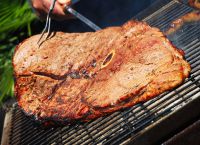 |
|
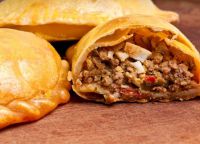 |
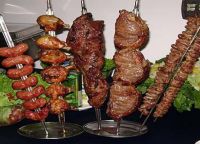 |
Desserts in Argentina
The natives love sweets and prepare them from honey, chayote, quince, sweet potato and even ambrosia. Many recipes vary depending on the area and the fruits that grow there. The most favorite desserts in the country are:
- - This is boiled condensed milk, which is used as a filling for cookies, sweets, cakes and other sweets;
- flan- classic pudding made from milk, sugar, eggs and vanilla;
- queso con dulce- This is a thick slice of cheese with the addition of sweet potato or quince jelly;
- masamorra(Mazamorra) or kagiyi (Сaguiyi) - a rural dessert made from milk, sugar, vanilla and maize, and used with honey;
- ice cream- the most popular taste here is a dessert with condensed milk called chelado.
Traditional drinks of Argentina
The Argentineans' favorite drinks are:
- Mate tea(mate). It has invigorating and useful properties, perfectly quenches thirst and hunger. It is prepared from a plant called yerba mate, ice, herbal mixtures, citrus juices can also be added. It is customary to drink tea from special vessels called kalabasa and made from bottle pumpkin.
- Argentine wines... They are famous all over the world. The most famous of them are Malbec (from Mendoza), Torrontes (province of Salta and La Rioja). The country produces the best red wines in South America.
- Aloha. While in Argentina, try a local beer called aloha.
- Strong alcohol. The country produces excellent quality gin and whiskey.
- Coffee. Lovers of this drink can pamper themselves with natural coffee brought here from Colombia and Brazil.
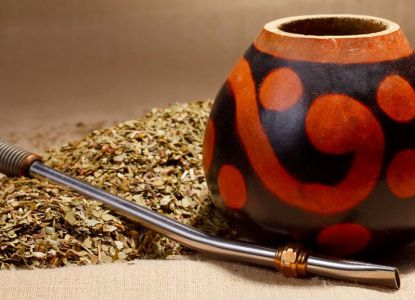
Going on a trip to Argentina, be sure to appreciate the national cuisine of the country, along with its drinks and traditional desserts, in order to fully immerse yourself in the local flavor.




